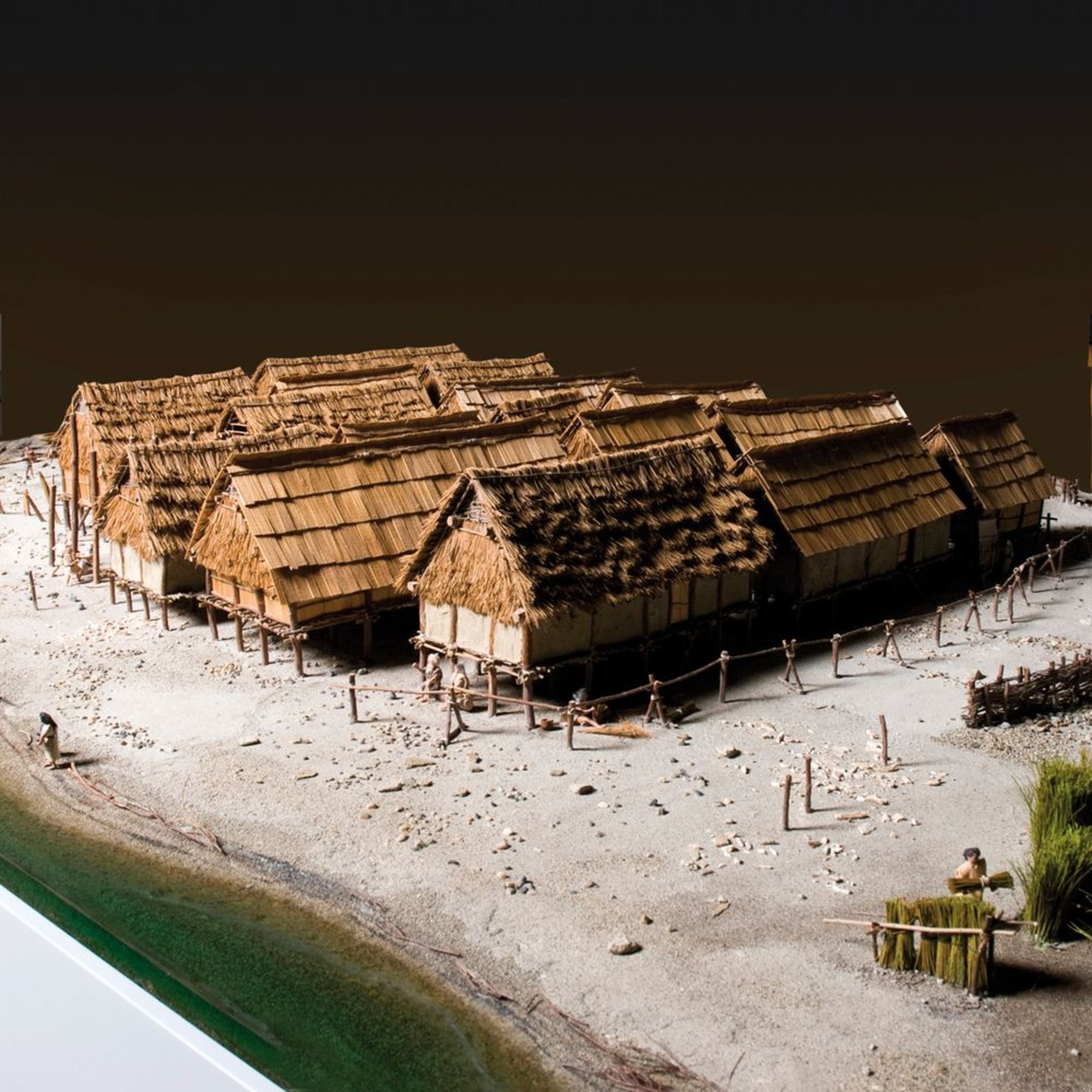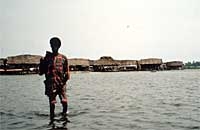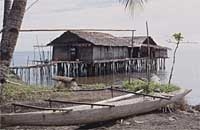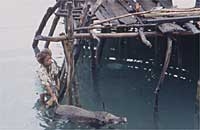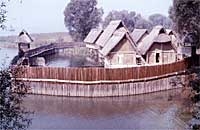- Home
- The village
- A lakeshore village ?
- Ethnographic comparisons
Benin
On the shores of Lake Nokoué, in a lagoon near Cotonou (Benin), the large village of Awansouri-Toji was able to resist the orders of the French colonists. The translation of its name says it all: The-War-Ended-On-Water. The village was burned down several times by colonial troops, and was rebuilt each time.
In addition, it appears that the original inhabitants of these marshlands and lagoons may have been refugees fleeing slavery. They ended up developing a whole range of new architectural and fishing techniques, to the point where they created a new ethnic identity: the Toffinu, or Water-Men.
Village of Awansouri.
Village of Awansouri.
New Guinea
Worlds away from Benin, other examples can be found in New Guinea, where the People of the Sea deliberately built their houses next to lagoons and in shallow water on the foreshore. Once again, defense seems to be the principal reason, although other causes cannot be ruled out, including the question of property rights on land, and the search for areas less infested by mosquitoes.
Descriptions of these villages, brought back by the great English and French navigators, influenced the early years of archaeological research, and led to the erroneous idea of pile-dwellings cities, Neolithic villages constructed completely in water.
Village of Awansouri.
Village of Serui-Laut
(Kp. Yapen-Waropen, Papua Barat).
The Bronze Age
Built shortly before World War II, the reconstruction of a palafitic village on the shores of Lake Constance (Germany) used a barricaded village design in which the houses were tightly packed against each other. This throwback to the romantic vision of a Bronze Age pile-dwellings is not without parallels to villages discovered more recently.
In the late Bronze Age, at Cortaillod (Neuchâtel, Switzerland), the houses were arranged in tight rows along real streets made of raised planks. Systems of palisades controlled access to the village from dry land.
Unteruhldingen (Constance, Germany).
Photo: H. Reinerth.
Cortaillod (Neuchâtel, Switzerland).
Photo: M. Egloff.
